The use of Artificial intelligence for image representation has increased recently, as we can see many examples on social media, websites and the general media. Often questions are raised about whether artificial intelligence will replace designers and, secondly, the ethics around using artificial intelligence to generate images.
Landscape representation has occurred over thousands of years, from painted rock art to carvings, cartography, sketching, paintings, photography, and digital representations. As landscape architects, we represent existing and future landscapes through various mediums. In the past fifty years, we have used hand sketches, hand collages, digital collages, advanced 3d modelling (Lumion, sketchup, etc) with fly-throughs with movement to virtual reality and augmented reality. The key purpose of landscape representation is to develop ideas, generate a discussion and determine the next steps as we head toward finalising an idea and design for realisation through construction.
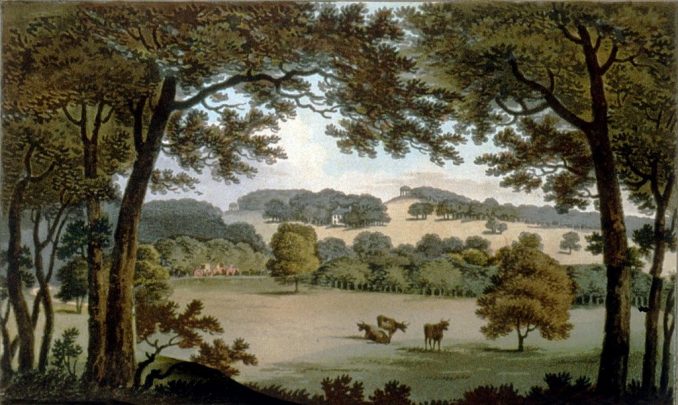
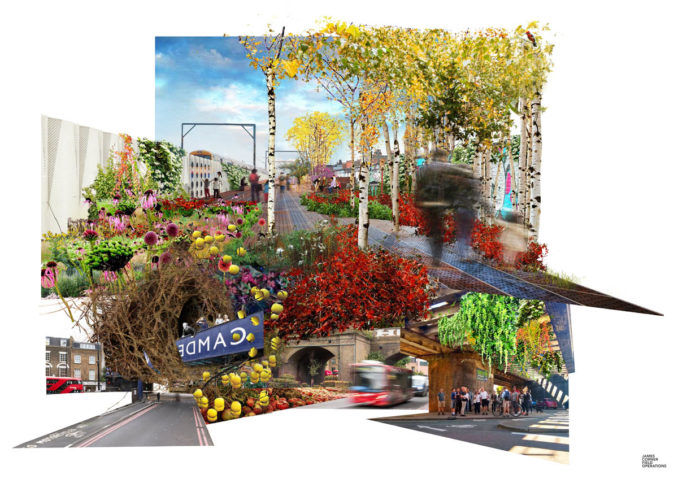
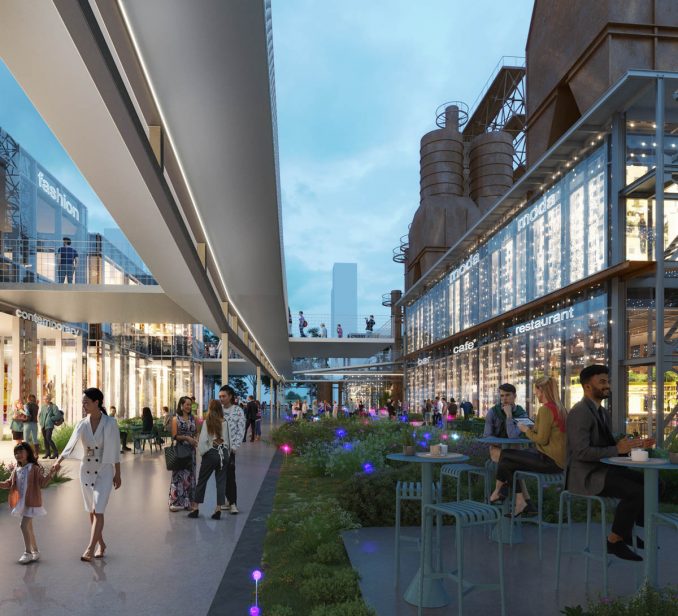
“It has been said that we can only realize what we can imagine. But in order to realize the constructs of our imagination we must convey ideas to others as well as to ourselves. Representation is by no means a neutral practice, and the process of communication, the process by which the imagination takes its first form, itself necessarily limits the range of our design possibilities.” [4]
“From a landscape architectural point of view, a major aspect of landscape is that it is not only a phenomenon of analysis, but is more significantly something to be made, or designed…… the representation is not only encoded in various related textual media, such as literature or painting, but is more significantly embodied in the constructed landscape. As such, landscape architectural drawing – a textual medium which is secondary to the actual landscape – can never be simply and alone a case of reflection and analysis; it is more fundamentally an eidetic and generative activity, one where the drawing acts as a producing agent or ideational catalyst.” [5]
The landscape representations created through these mediums are often generated by using human hands and selecting materials to create the landscape representation. Of course, 3d is generated by the computer, but it still requires the designer to set the parameters and intervene in creating the visual representation. With artificial intelligence image generators (midjourney, diffusion, etc), humans can be seen as less involved in creating representation and selecting the materials beyond a few text prompts. However, the exception to this can is the recent beta version of Photoshop, which allows users to choose or replace materials as they see fit.
During each shift in technology, there are often various opinions on whether the change will impact the landscape architecture profession. When the move from hand drawing to CAD and then to 3D occurred, there were opposing views about using the new medium. However, over time the medium becomes accepted (by clients and the industry). Some continue to use hand drawing, and others use digital media and some move towards the new trend, which in this case is artificial intelligence. The difference is that the speed at which changes are occurring and the sharing of knowledge through social media, youtube tutorials is far greater than in previous times. During the early digital era when AutoCAD or Photoshop came out with a new version, it often took years for firms to move from version to version (due to the costs). With artificial intelligence currently being free it is moving quickly and swiftly developed due to the speed of machine learning and the ability to learn, reiterate and update.
We face many issues with the use of artificial intelligence for landscape representation. How authentic is the final image that may incorporate elements of copyrighted materials used by machine learning to develop landscape representations? What are the possible biases and cultural appropriation of artificial intelligence in creating images based on the past? How far is the human removed from the process, thus creating a disconnection between human creativity and the site (geography, environment, culture, people) due to the use of a machine? Does the representation show any reference or understanding of scale (space, materiality or elements)?
Landscape architects can use artificial intelligence to create landscape representation, however, there is a need to understand the tool and its impacts. As professional designers, we need to review each image critically and whether it has a cultural bias, can be built, or is ecologically and environmentally sensitive to the site. Creating a compelling image is only part of the design process. We need to be careful of being consumed by the visual representation compared to the landscape envisioned and experienced by people [5]. As designers, this is not a new problem we face, as landscape representations (hand or digital) can be easily produced to create a powerful and convincing idea for the viewer. By using artificial intelligence’s power to create compelling landscape representations, we can easily blur the line between reality and virtual reality. We have a responsibility when we create a representation to understand that we are creating a promise of the future landscape to the viewer, and therefore we can easily undermine landscape architects’ reputations if we promise a future that cannot be delivered.

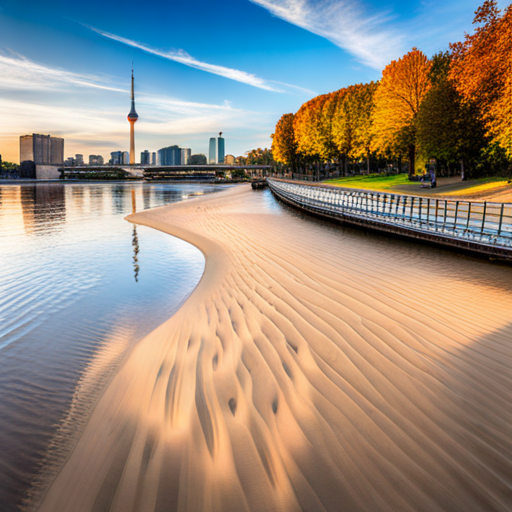
Will artificial intelligence replace designers? I do not think landscape architects’ primary concern should be if we will be replaced by artificial intelligence. There are numerous examples of people thinking technology will replace them and not realising they have unique skills and abilities to create landscapes for people. The size and availability of choice that artificial intelligence offers will often overwhelm people and clients. Undoubtedly, some projects may be designed only by sophisticated artificial intelligence. However, they will still require a human to set the parameters and determine the preferred outcomes.
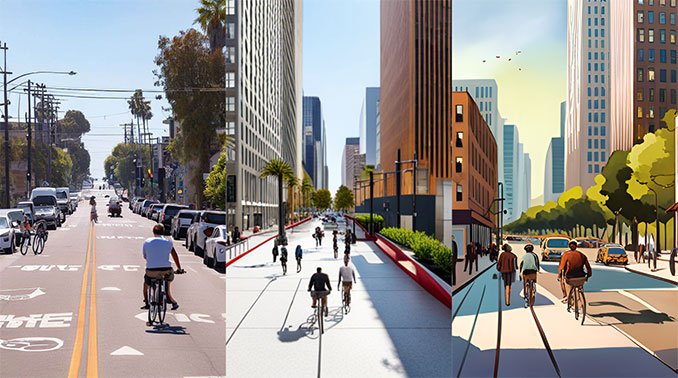
The results for artificially generated images can differ due to the prompt and specifications (style, HDR, etc). Also, there currently is a variety of apps that can generate vastly different images based on the same prompt. Learning about prompts, parameters, and language takes some time to get the best results for the intended purpose (photoreal vs animated).
Using artificial intelligence to create landscape representations allows us to explore new ideas, methods, solutions, and options, have fun, and be inspired by the medium. The use of artificial intelligence for landscape representation will increase as the tools become more sophisticated and designers learn the best methods to achieve quality outcomes. As with previous changes in the industry, the use of artificial intelligence as a new form of medium will occur; however, it will not “kill” or push other representation methods into the history books; they will still be used when the designer feels that it is an appropriate method of communication to the audience whether it be a hand sketch or sketch on an iPad or visualisation from artificial intelligence.
The use of artificial intelligence in landscape representation was written by Damian Holmes, Founder & Editor of World Landscape Architecture.
Credits/Notes:
[1] English landscape garden. (2023, April 5). In Wikipedia. https://en.wikipedia.org/wiki/English_landscape_garden
View of Wentworth Woodhouse, South Yorkshire by Humphry Repton, before proposed landscaping
[2] Collage – James Corner Field Operations winning entry in the Camden Highline Competition
[3] Hangzhou Oil Refinery Factory design competition – Visualisation: © MVRDV
[4] Marc Treib (2008) Representing Landscape Architecture. Taylor & Francis ISBN 0-203-41281-8
[5] James Corner (1992) Representation and landscape: Drawing and making in the landscape medium, Word & Image: A Journal of Verbal/Visual Enquiry, 8:3, 243-275, DOI: http://dx.doi.org/10.1080/02666286.1992.10435840
[6] Image generated by Stable Diffusion with the prompt – Ski village with snow and palm tree
[7] Image generated by Stable Diffusion with the prompt – Sandy beach in Berlin on a river
[8] Artificial Intelligence Generated images using the prompt – Shared Street, cars, cyclists, pedestrians in Los Angeles. Image Credits: Left – DALL-E; Middle – Stable Diffusion; Right – Tome (OpenAI);
